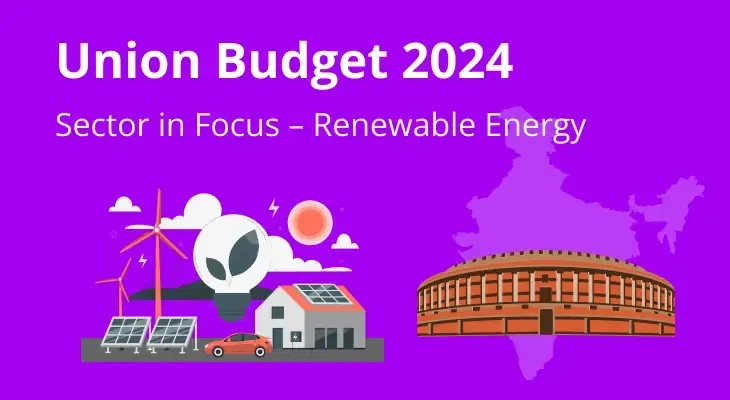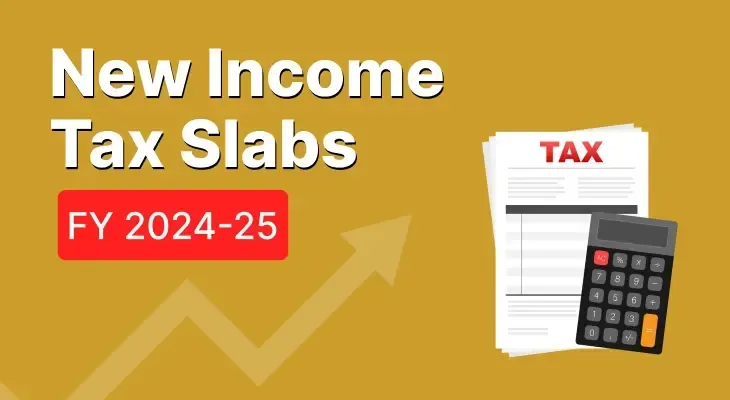
Upcoming Union Budget: Sector in Focus – Renewable Energy
India has an ambitious renewable energy ambition, with nearly 500 GW of installed renewable and non-conventional sources by 2030. The upcoming Union Budget is expected to follow in the footsteps of the announcements made in the interim budget in February. There was a significant emphasis on the renewable energy sector, reflecting the government's commitment to sustainable development and the goal of achieving net-zero emissions by 2070. The focus on clean energy amidst increasing global climate change concerns and India's strategic drive to reduce dependency on fossil fuels is expected to continue in the upcoming Union Budget.
Expectation from the Union Budget
To reach the 500 GW renewable energy target by 2030, the industry estimates that India will have to install around 50 GW of renewable power capacity every year till 2030 to meet the targets set out. This entails 10s of billions of dollars of capital investments. For context, India added just a little less than 20 GW of renewable energy capacity in 2023-24.
If we look at the budgetary allocations in the interim budget, the Ministry of New and Renewable Energy (MNRE) received a substantial budgetary increase of 25.71%, bringing its allocation to ₹128.5 billion from ₹102.22 billion in the previous year. This rise highlighted the government's intent to bolster the renewable energy infrastructure and promote green energy initiatives. Experts believe this focus will not waver in the soon-to-be-announced Union Budget.
Here are some of the key initiatives announced for the renewable energy sector in the interim budget
Solar Energy Expansion
The interim budget had proposed the solarisation of 10 million households through rooftop solar installations, aiming to generate approximately 30 GW of solar power. This initiative is expected to provide households with 300 units of free electricity per month, fostering savings and promoting energy independence.
Offshore Wind Projects
The interim budget had allocated viability gap funding (VGF) for 1,000 MW of offshore wind projects. This financial assistance was aimed at attracting investments and developing India's offshore wind energy capacity, contributing to the target of 500 GW of non-fossil fuel energy by 2030.
Green Hydrogen And Bioenergy
There was an increased allocation for the National Green Hydrogen Mission from ₹2.97 billion to ₹6 billion. Additionally, new schemes for the bioenergy sector were announced, focusing on sustainable fuel sources like compressed biogas blended with natural gas for transportation.
Research And Development
A ₹1 trillion corpus was established for research and development in sunrise domains, offering long-term financing with minimal interest. This initiative aims to drive innovation and technological advancement in renewable energy sectors.
Why the Strategic Focus on Renewable Energy?
The focus on renewable energy in the budget stems from the urgent need to address climate change, reduce carbon emissions, and enhance energy security. Industry experts have welcomed the budget's provisions, noting that the increased allocations and supportive policies are crucial for scaling up renewable energy projects and achieving sustainability goals.
Wind And Solar Energy
The budget's support for solar and wind energy projects is seen as a positive step towards diversifying the energy mix and reducing reliance on coal and other fossil fuels. The rooftop solar initiative and VGF for offshore wind projects are expected to drive significant growth in these sectors.
Green Hydrogen And Bioenergy
The emphasis on green hydrogen and bioenergy aligns with global trends towards cleaner fuel alternatives. These initiatives are anticipated to not only reduce emissions but also create new economic opportunities in the green energy sector.
Electric Mobility
Enhancing the EV ecosystem through budgetary support is likely to accelerate the adoption of electric vehicles, reduce urban pollution, and contribute to the development of sustainable transportation infrastructure.
For Investors
For investors interested in the renewable energy sector, it is essential to understand the implications of the strategic focus areas highlighted above. There is a significant rise in renewable energy spending, driven by the need to reduce carbon emissions and build a self-reliant and sustainable energy infrastructure. This increase is likely to impact stocks and bonds associated with renewable energy manufacturing and technology. Investors should be aware of the key players in the industry, recent policy changes, and how these factors might influence market performance.
Notable stocks in the renewable energy sector include:
Tata Power Ltd.
Suzlon Energy Ltd.
Inox Wind
National Thermal Power Corporation (NTPC) Ltd.
Sterling and Wilson Renewable Energy Ltd.
JSW Energy Ltd.
Adani Green Energy Ltd.
Thematic indices such as the Nifty Energy Index track the performance of the energy sector and the renewable energy sub-sector. It aims to provide returns that are in line with the overall returns offered by the sector. It comprises 10 leading companies in the sector that are selected based on their liquidity and free float market capitalisation. This list is periodically reviewed to ensure it accurately reflects the performance of the sector.
Conclusion
With increased budgetary allocations and strategic initiatives, the upcoming budget is expected to continue the trend while bolstering the renewable energy sector, driving innovation, and promoting green energy adoption. These efforts are crucial for achieving India's long-term energy security and climate goals, positioning the country as a leader in the global transition to clean energy, paving the way for a sustainable and resilient energy future.


